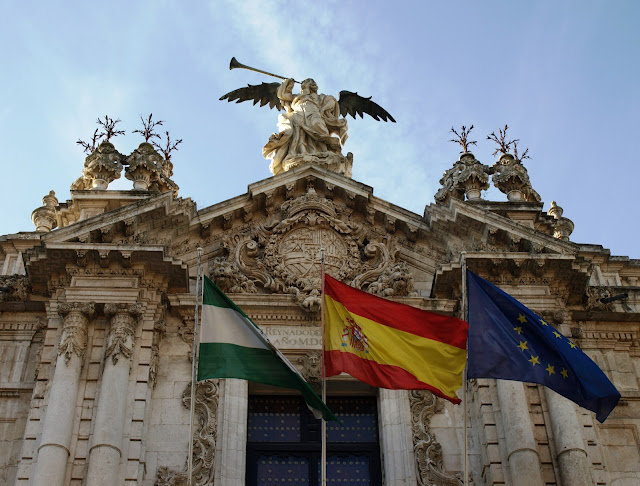El edificio de la Universidad de Sevilla, curiosamente a pesar de que su origen estuvo en la función de albergar una fábrica de tabacos, es rica en esculturas de niños y de caras infantiles.
Ya lo hemos comprobado en varias ocasiones con motivo de alguna de las fuentes de agua del recinto, pero hoy nos vamos a referir a unos elementos arquitectónicos que desde la línea de suelo es difícil de distinguir por el paseante.
Alrededor de la cornisa del edificio hay una serie de pináculos, no todos iguales. En estos pináculos se pueden distinguir cuatro caras infantiles.
¿Y qué tienen que ver estas caras con el edificio? Poco o nada. El autor del mismo quiso que estas cuatro caras personificaran al viento y sus direcciones.
The building of the Seville´s University, curiously in spite of the fact that the origin was to do the function of tobacco´s factory, is rich in sculptures of children and baby faces.
Already we have verified it in several occasions with some water fountains, but today we go away to saying to a few architectural elements that from the floor line it is difficult to see for the walker.
About the cornice of the building there is a series of pinnacles, not all of them with the same desing. In each these pinnacles four infantile faces can be distinguished.
And what do these faces mean with the building? Nothing. The author of the same one wanted that these four faces were personifying to the wind.













